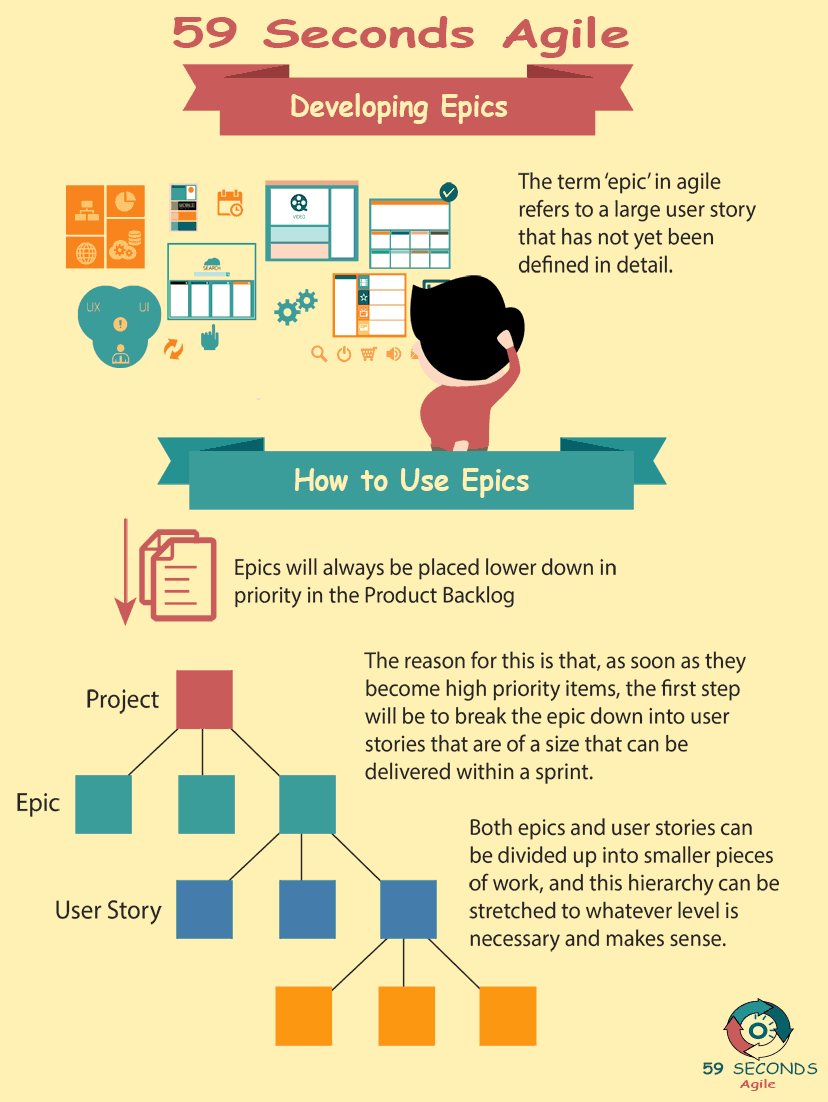This article looks to discuss Agile Epic Definition and Personas. This article is part 6 of an 8 section discussion on developing Epics and includes training videos. Part 1 is available by following this link.
Agile Epic Definition
A 59 Seconds Agile Training Video
Continue to Part 7 Below
Agile Epic Definition
A 59 Seconds Agile Article
This article provides an ‘Introduction to the Developing Agile Epics and personas’ and looks to discuss what an Epic Is and what a Persona is within an Agile project.
Agile Epic Definition: Creating a Persona
The creation of personas is not new by any means. Some personas take on a life of their own in our imaginations. From Tintin to Superman and, more recently, Harry Potter, authors and artists have visualised characters that are three-dimensional, flawed and perfect at the same time. You yourself may have avatars that you use in gaming, either resembling you or totally different in every way.
So, when you create a persona, you have lots of inspiration to draw on. True, the clerk in Accounting who will use the software to be developed may not be as charismatic as Iron Man, but has unique characteristics too.
Agile Epic Definition: Persona Goals
The persona we are about to create has one or more goals that are aligned with the product vision.
Firstly, the best way to create personas is in a workshop, with as diverse a team as possible. The objective will be to map out one flip-chart page for a persona. So, How to create a persona?
One, start off by deciding some basic demographics, like age, gender, work status such as at school, contract worker, or retired.
Two, pick a name and find an illustration for your persona.
Three, you can start thinking about why the persona needs and wants the product.
Now fill in more personal details and demographics to round out the persona.
Does this person play sport, have a Facebook account, enjoy crimes series?
Is he or she a vegetarian?
Married, single, or do they have children?
Agile Epic Definition: The product Vision Board
Document as you go, using a flip chart or a white board. Later you can make a more permanent version of each persona that should be pinned up on the wall near the Product Vision board. This will probably be the primary persona, who is the most likely to buy the product.
The persona you have just created will need adjustment as the project continues. You will probably need to add information with each sprint. Sometimes, if a major change is requested during the project, you may have to redefine your persona completely.
Continue Reading —> Next
Agile Epic Definition
A 59 Seconds Agile Video Animation
Continue Reading —> Next
User Stories Applied
A 59 Seconds Agile Book Review
User Stories Applied by Mike Cohn is one of our favourite books on Agile User Stories. The book starts with an overview into user stories, and details what a user story is and the different aspects of them. He then discusses how to go about writing a user story, and provides details of the INVEST criteria that can be used to determine if the story is meeting all of its objectives. Next Mike gives an in depth discussion of who user stories are written for and where to begin when gathering the details for them. The book then discusses acceptance testing user stories, including how to go about specifying these criteria and the responsibilities of the development team and customers during this process.
Continue Reading —> Next
Developing Agile Epics
A 59 Seconds Agile Infographic


